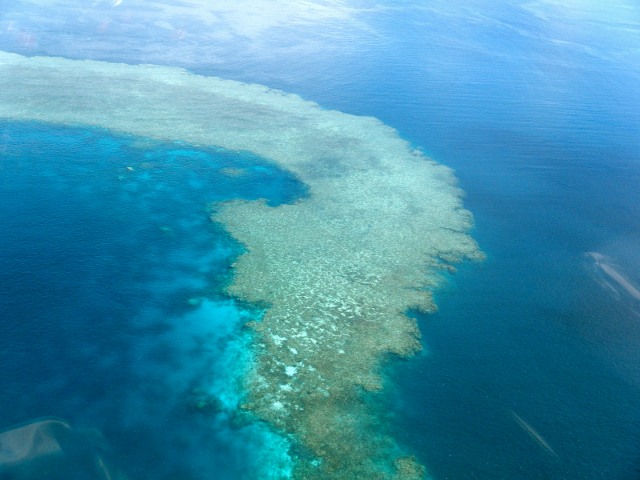New research exploring tourism and mining on the Great Barrier Reef reveals a sense of uncertainty around the future of one of Australia’s iconic tourism attractions, with locals concerned about the impact of dredging near the Reef.
The study was completed late last year and is in the stages of analysis. It was carried out by Professor Susanne Becken and Dr Char-lee McLennan from the Griffith Institute for Tourism with Dr Brent Moyle from Southern Cross University, and is one of the first studies with a particular focus on the interaction between tourism and mining.
The research explored the perceptions of Gladstone residents, businesses and government stakeholders around the management of the Great Barrier Reef as an iconic tourism attraction in a region undergoing massive industrial expansion.
“We found that the Gladstone community had a strong attachment to the Reef and was aware of its iconic tourism and World Heritage status,” Dr McLennan (below) said. “However, locals generally felt ill-informed when it came to how the icon is being protected.”
Preliminary results indicate locals are concerned about the impact of the resources sector and associated dredging on the Reef and the potential for further damage to occur in the future.
A number of respondents highlighted a massive change in Gladstone harbour, resulting in significant beach erosion and the huge loss of marine life. “This was a highly controversial topic among residents, with a clear divide in the community about whether the impact had been due to flooding or dredging,” Dr McLennan said.
Locals were also uncertain about the future of tourism opportunities in the Reef and the broader Gladstone region given the significant mining activity.
“If appropriate regulations are not enforced, development driven by the resources sector could irreparably damage the Great Barrier Reef and the tourism industry,” Dr Moyle said. “If the Reef is sustainably managed it could be an economically viable tourism destination for generations to come.”
The results indicate that most businesses that came into contact with the Reef are trying their best to minimise their impact and that the environmental laws in place are ensuring many do the right thing. Respondents considered current laws to be strict enough, but felt that they were not always followed or enforced.
 “To improve the sustainable management of the Great Barrier Reef in the Gladstone region, a long-term view towards development should be taken,” Professor Becken (left) said. “The Great Barrier Reef is one of Australia’s most iconic tourism attractions, drawing over two million visitors each year. Government authorities should play a key role in ensuring the current laws and regulations are strictly monitored, with breaches identified and penalties enforced.
“To improve the sustainable management of the Great Barrier Reef in the Gladstone region, a long-term view towards development should be taken,” Professor Becken (left) said. “The Great Barrier Reef is one of Australia’s most iconic tourism attractions, drawing over two million visitors each year. Government authorities should play a key role in ensuring the current laws and regulations are strictly monitored, with breaches identified and penalties enforced.
While the respondents were uncertain of the impact of shipping and dredging on the Great Barrier Reef, they could clearly see that their environment was changing.
“Future research is needed to explore strategies for sustainable co-existence between tourism and the resources sector, as well as the impact of shipping and dredging on the Great Barrier Reef.”
The Griffith Institute for Tourism will be launched on the Gold Coast campus on this Thursday, March 27.
